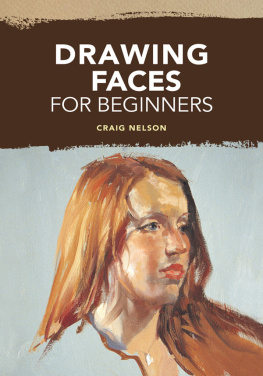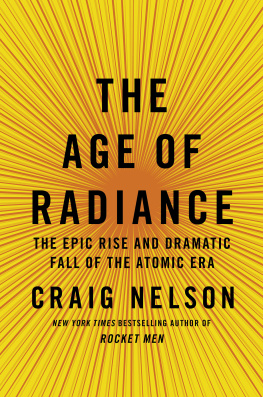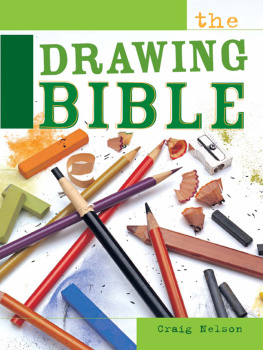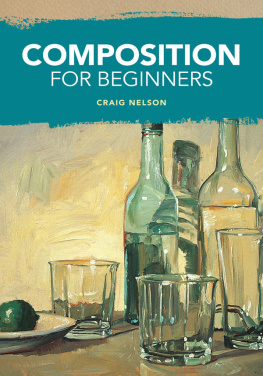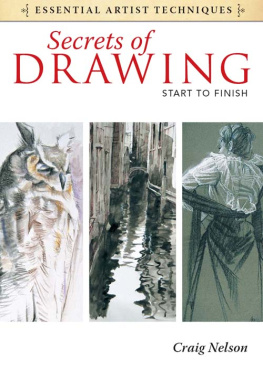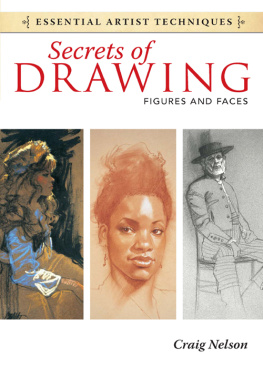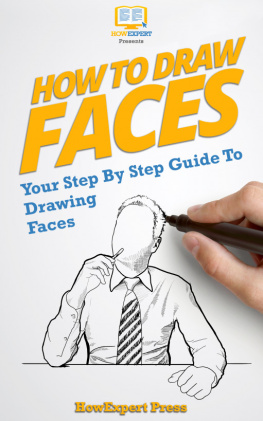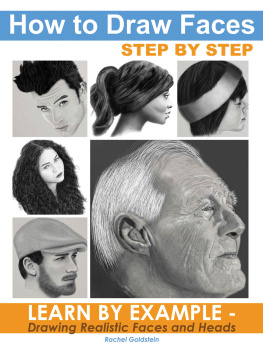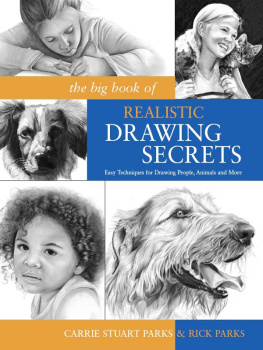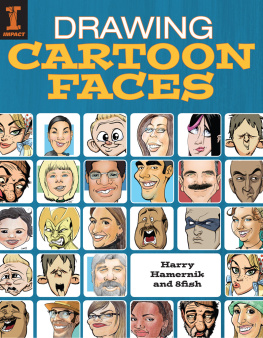Contents
DRAWING FACES FOR BEGINNERS
CRAIG NELSON

Introduction
Drawing is the one artistic endeavor that everyone has experienced at some time. It was most likely the first written form of communication, and continues to be a favorite leisure activity.
It is the seemingly magical act of drawing that captivates the heart and imagination of so many. The thrill of making a group of marks create an image offers a special sense of accomplishment. As a child matures, each new year brings a greater awareness of how to make those marks accurately reflect the subject he or she chooses to depict.
The act of drawing is timeless. Although mediums, techniques and concepts have changed, the use of marks and tones has always been the foundation on which drawings are made. Beginning with a blank page and ending with a pleasing image can be a rewarding experience. As in any endeavor, improvement comes with practice and repetition. Eye-hand coordination and sensitivity to mediums may be developed through experience.
Today, those who engage in the art form known as drawing work on a variety of levels. There are those who doodle, those who sketch for fun, those who draw for a living, and those who draw for the sheer aesthetic beauty of drawing. Whatever the motive, drawing is something that everyone can enjoy and grow with. It takes only desire and practice, practice and more practice. The satisfaction of creating an outstanding drawing is hard to beat, so pick up your pencils, pens, markers, charcoals or pastels and enjoy!
Mediums and Materials
Just about anything that can make marks or tones may be used for drawing. The yellow-jacketed no. 2 graphite pencil with an eraser that we are all familiar with is usually our first drawing tool.
However, even graphite comes in various degrees of hardness, offering a variety of tones. There are many other types of mediums that all have unique characteristics and therefore offer unique drawing opportunities. Try as many as you can.
Drawing Mediums
Drawing mediums are referred to as either dry or wet. Both types can be combined in countless ways to produce everything from quick, hard contour lines to rich, graceful gradations.
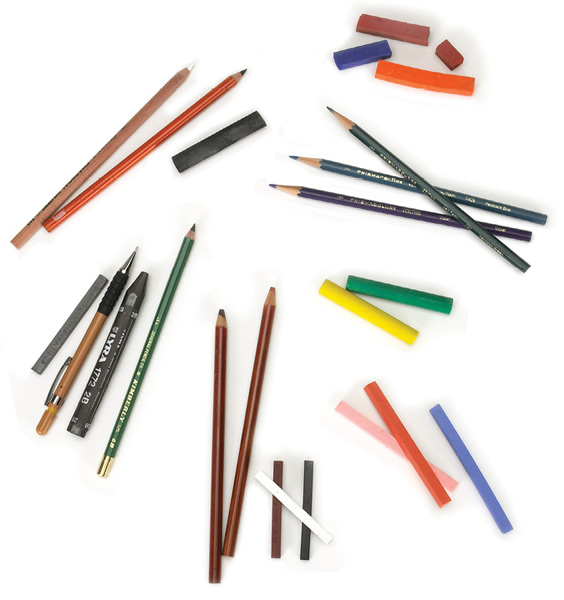
Dry Mediums
Clockwise: Soft pastels, colored pencils, oil pastels, hard pastels, cont pencils and sticks, graphite pencils and sticks, charcoal pencils and sticks
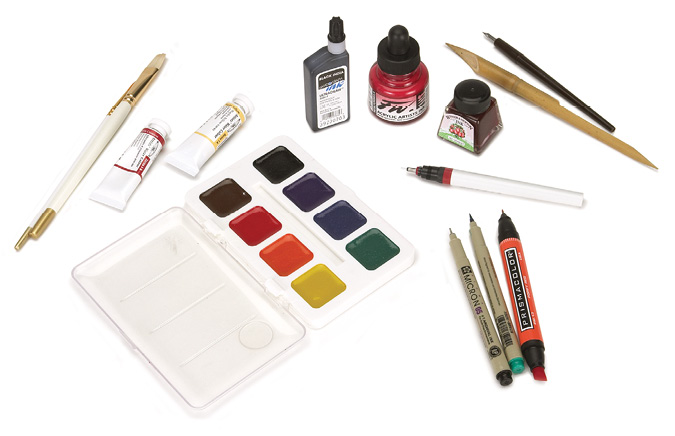
Wet Mediums
Watercolors and colored pencils
Drawing Tools
The proper drawing tools combined with your chosen mediums and surfaces will help you achieve your artistic vision. Here are some tools you may find useful.

Drawing Tools
Top row, left to right: Tortillions and sandpaper, pencil sharpeners
Bottom row, left to right: Erasers, brushes, art knives
Graphite
Graphite is most commonly referred to as pencil. However, graphite is a specific type of pencil that produces silvery blacks, and it comes in sticks as well as pencils
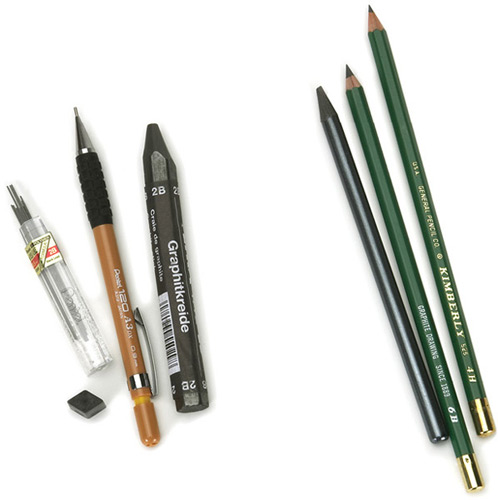
Forms of Graphite
Pencils are best for detailed work while graphite sticks are good for creating large tonal areas. Mechanical pencils, for which a variety of leads are available, are a favorite of many artists.
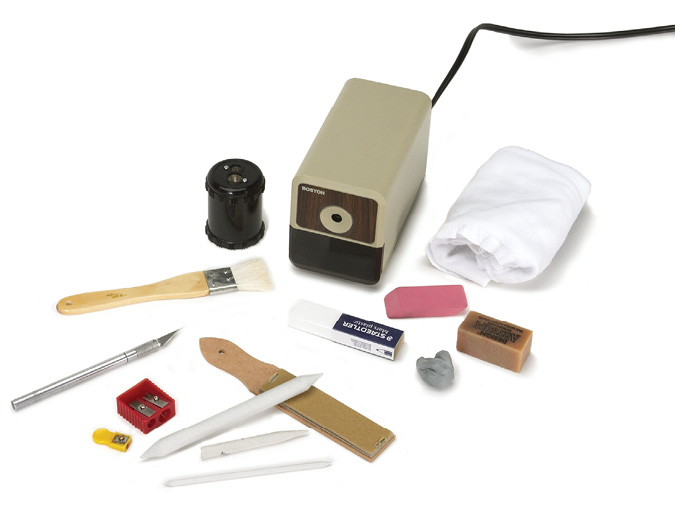
Other Materials for Working With Graphite
Clockwise: Pencil sharpeners, rag, erasers, sandpaper, tortillions, lead pointer, art knife, brush
Graphite Characteristics
Artists graphite is a combination of graphite and clay. The higher the proportion of graphite to clay, the softer the medium.
Graphite comes in degrees of hardness from 8H to 6B (the H refers to hard and the B designates black). Hard graphite (H) is good for fine details. Soft graphite (B) can produce a wider range of tones than hard graphite and is good for large tonal areas. Soft graphite requires sharpening more often than hard.
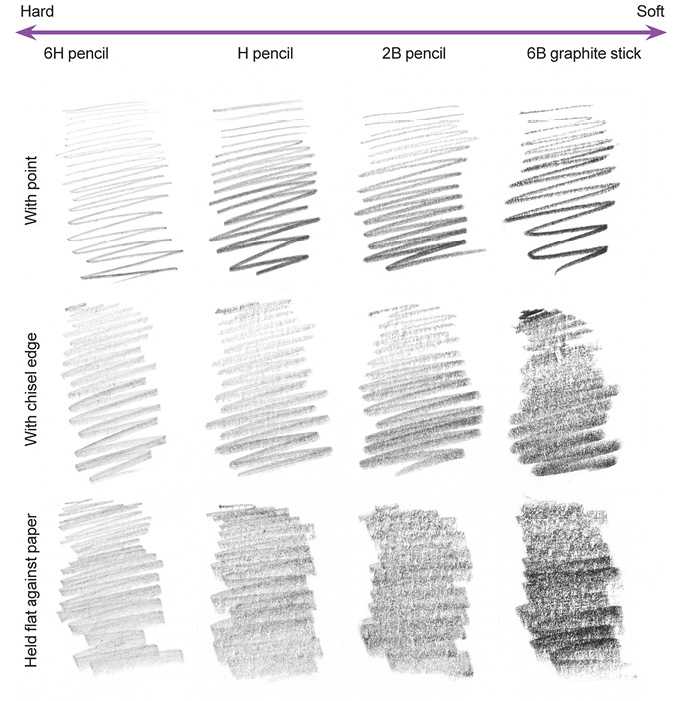
Graphite Techniques
Lifting Out
The complement of the graphite pencil is the eraser. A kneaded eraser is pliable and is great for picking out soft whites. The hard eraser is better for adding crisp whites.
Hatching and Crosshatching
Hatching is a closely spaced series of lines, usually parallel. Hatching is used for shading, shaping and building texture.
Crosshatching is hatching done in layers so that the lines intersect each other. By adding layers of crosshatching, you can increase the density and darken the value in small increments. This makes crosshatching an ideal technique for creating shadows.

From left to right
2H, 6B, HB, Graphite stick
Charcoal
Charcoals incredibly rich blacks make it a seductive medium. Since charcoal marks are easily made and can be quite broad, charcoal lends itself to large drawings.
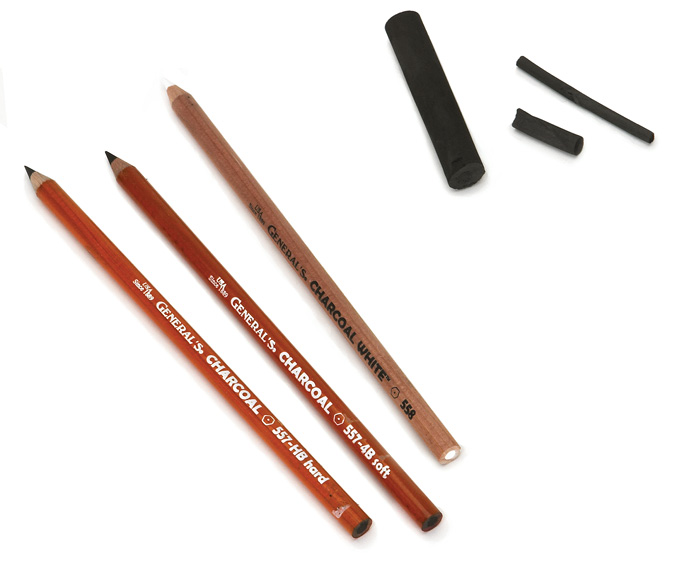
Forms of Charcoal
Charcoal pencils, charcoal sticks and vine charcoal
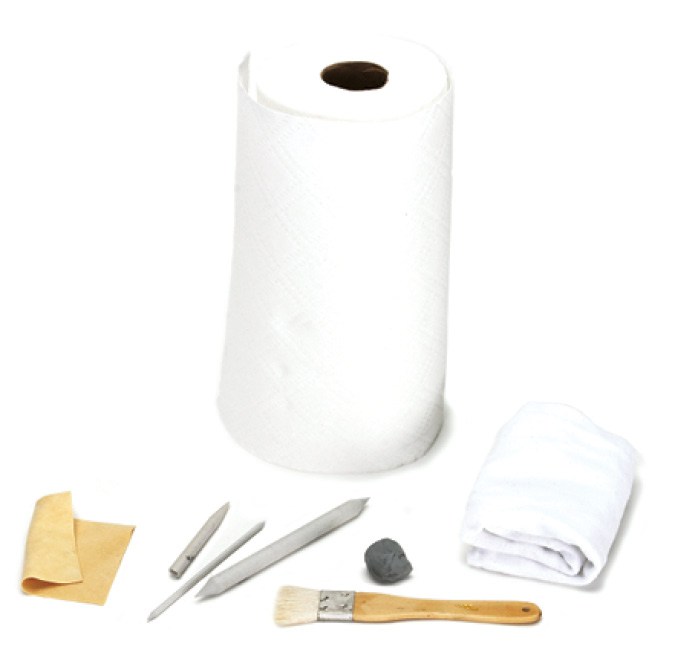
Other Materials for Working With Charcoal
Left to right: Chamois, tortillions, brush, kneaded eraser, rag, paper towels
Charcoal Characteristics
Charcoal sticks and pencils are made of compressed charcoal. There is also a softer variety called vine charcoal, useful for sketching.
Compressed charcoal, like graphite, comes in varying degrees of hardness. The 2HB through 6B are generally the most desirable.
Charcoal sticks are good for laying down wide strokes, while pencils are better for delicate work. Charcoal pencils are encased in either wood or paper and are less messy than sticks.

From left to right
Vine charcoal, compressed charcoal, white charcoal on black paper, charcoal pencil
White Charcoal Has Many Uses
White charcoal may seem like a contradiction in terms, but white charcoal pencils do exist. White charcoal can be blended with black charcoal or used by itself on toned paper. White charcoal can also be used to cover charcoal stains on white paper.

